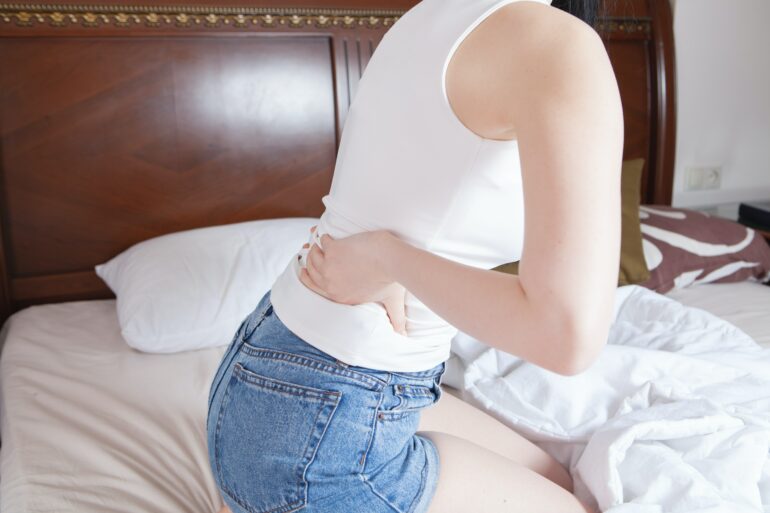Urinary incontinence is a common condition that affects millions of women worldwide, and it can have a significant impact on their quality of life.
Fortunately, there are various strategies, treatments, and incontinence products available to help manage urinary incontinence effectively. In this article, we will explore different ways to manage urinary incontinence in women.
Understanding Urinary Incontinence in Women
Before diving into management strategies, it’s essential to understand the different types of urinary incontinence:
- Stress Incontinence: This occurs when physical activities like sneezing, laughing, or exercising put pressure on the bladder, causing urine leakage.
- Urge Incontinence: Often referred to as “overactive bladder,” this type involves a sudden, intense urge to urinate, followed by involuntary leakage.
- Overflow Incontinence: This happens when the bladder doesn’t empty completely, leading to frequent dribbling or leakage.
- Functional Incontinence: Physical or mental limitations, such as mobility issues or cognitive impairments, can result in difficulty reaching the bathroom in time.
- Mixed Incontinence: Some women may experience a combination of the above types, such as stress and urge incontinence simultaneously.
Now, let’s explore ways to manage urinary incontinence in women:
1. Lifestyle Modifications
a. Pelvic Floor Exercises (Kegels): Strengthening the pelvic floor muscles can help prevent urine leakage, especially in cases of stress incontinence. Regular Kegel exercises can improve bladder control.
b. Weight Management: Excess weight can contribute to urinary incontinence. Losing weight through a balanced diet and exercise can alleviate symptoms.
c. Dietary Changes: Certain foods and beverages, like caffeine, alcohol, and spicy foods, can irritate the bladder. Limiting their consumption may reduce symptoms.
d. Hydration: While reducing irritants is essential, staying adequately hydrated is equally important. Dehydration can lead to concentrated urine, which can irritate the bladder.
e. Timed Voiding: Establishing a regular bathroom schedule, even if you don’t feel the urge, can help train your bladder and reduce accidents.
2. Behavioral Therapies
a. Bladder Training: This technique involves gradually increasing the time between bathroom trips, helping to stretch the bladder’s capacity and reduce the frequency of urgency. Market is flooded with various incontinence products for women from adult diapers to incontinence briefs.
b. Biofeedback: Biofeedback therapy employs electronic sensors to monitor and display muscle activity. This technique aids women in understanding and mastering control over their pelvic floor muscles, offering a potential solution for urinary incontinence.
3. Medications
Depending on the type and severity of urinary incontinence, a healthcare provider may prescribe urinary supplements that help relax the bladder or increase bladder muscle strength. These medications can be effective in managing urge incontinence in women.
4. Medical Devices
a. Pessaries: A pessary is a small, removable device that is inserted into the vagina to support the bladder and reduce stress incontinence. The use of pessaries has long been a trusted method in addressing urinary incontinence in women.
These small, removable devices, designed to be inserted into the vagina, provide essential support to the bladder. When positioned correctly, pessaries counteract the dropping of the pelvic organs, a common cause of stress incontinence. This non-surgical solution offers many women immediate relief from the often embarrassing and inconvenient symptoms of urinary leakage.
Moreover, being removable, pessaries allow women flexibility in managing their condition, granting them a sense of control and improved quality of life. Regular check-ups with a healthcare provider are recommended to ensure the pessary is fitting correctly and to maintain vaginal health.
b. Urethral Inserts: Urethral inserts are disposable devices that are placed into the urethra before activities that may trigger incontinence, such as exercise or coughing.
These small, tampon-like devices are designed to be inserted directly into the urethra, acting as a barrier to prevent unexpected leakage. They are especially useful for women who are active and wish to partake in activities that may trigger incontinence in women, such as physical exercise or events that involve extended periods without restroom breaks.
Being a temporary solution, these inserts can be removed during urination and then reinserted as needed. While they offer flexibility and control to those using them, it’s essential for users to follow guidelines on duration and hygiene to prevent infections or other complications.
As with any incontinence solution, consultation with a healthcare professional is recommended before adopting the use of urethral inserts.
5. Surgical Interventions
In cases where lifestyle modifications, behavioral therapies, and medications do not provide sufficient relief, surgical options may be considered. Surgical procedures for urinary incontinence include sling procedures, bladder neck suspension, and artificial urinary sphincter implants.
6. Absorbent Products
In addition to the aforementioned strategies, absorbent products play a crucial role in providing comfort and confidence to women dealing with urinary incontinence in women. These products can be a temporary solution or a backup plan for those managing leakage discreetly. Here’s a closer look at these products:
a. Pads: Incontinence pads are thin, discreet absorbent products that are designed to be worn inside regular underwear. They are available in various absorbency levels, allowing women to choose the right level of protection for their needs. Pads are ideal for light to moderate urinary incontinence and can be easily changed as needed throughout the day.
b. Liners: Liners are even thinner than pads and are suitable for very light urinary incontinence. They are a practical option for women who experience occasional leaks or dribbles.
c. Adult Diapers (Pull-ups or Briefs): For those with more severe incontinence, adult diapers offer maximum protection. These products are similar to traditional diapers but are designed for adults. They provide excellent coverage and absorbency, making them suitable for overnight use or for extended periods when access to a restroom may be limited.
The availability of a wide range of absorbent products means that women can choose the option that best suits their level of incontinence and lifestyle. These products not only provide protection but also allow women to go about their daily activities with confidence and discretion.
Remember that while absorbent products are valuable for managing urinary incontinence in women, they are typically a temporary solution. It is essential to work with healthcare professionals to explore other management strategies and treatments that may help address the underlying causes of incontinence and provide more lasting relief.
7. Counseling and Support
Living with urinary incontinence in women can be emotionally challenging. Counseling and support groups can provide guidance, emotional support, and a sense of community for women dealing with this condition.
In conclusion, urinary incontinence is a treatable condition that can often be managed effectively. The key is to seek professional help and explore different management strategies to find what works best for your specific situation. With the right approach, you can regain control of your bladder and enjoy a more active and comfortable life.

